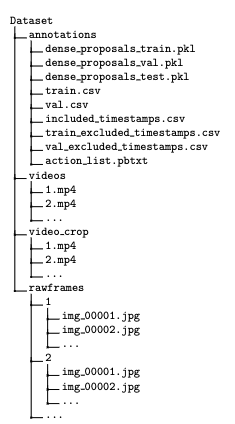import Foundation
//在 Swift 中,枚举类型是一等公民(first-class)。它们采用了很多传统上只被类(class)所支持的特征,例如 计算型属性(computed properties),用于提供关于枚举当前值的附加信息,实例方法(instance methods),用于提供和枚举所代表的值相关联的功能。枚举也可以定义构造函数(initializers)来提供一个初始值;可以在原始的实现基础上扩展它们的功能;可以遵守协议(protocols)来提供标准的功能。
/*枚举语法*********************************************************/
//使用 enum 关键词来创建枚举并且把它们的整个定义放在一对大括号内:
enum SomeEnumeration {
// enumeration deFinition goes here
}
//以下是指南针四个方向的一个例子:
enum Compasspoint {
case north
case South
case East
case West
}
//多个成员值可以出现在同一行上,用逗号隔开:
enum Planet {
case Mercury,Venus,Earth,Mars,Jupiter,Uranus,Neptune;
}
//每个枚举定义了一个全新的类型。像 Swift 中其他类型一样,它们的名字(例如 Compasspoint 和 Planet )必须以一个大写字母开头。给枚举类型起一个单数名字而不是复数名字,以便于读起来更加容易理解:
var directionToHead = Compasspoint.West
//directionToHead 的类型可以在它被 Compasspoint 的一个可能值初始化时推断出来。一旦 directionToHead 被声明为一个 Compasspoint,你可以使用一个缩写语法(.)将其设置为另一个 Compasspoint 的值:
directionToHead = .East
/*匹配枚举值和 Switch 语句*********************************************************/
directionToHead = .South
switch directionToHead {
case .north:
print("Lots of planets have a north")
case .south:
print("Watch out for penguins")
case .East:
print("Where the sun rises")
case .West:
print("Where the skies are blue")
}
//在判断一个枚举类型的值时,switch 语句必须穷举所有情况
let somePlanet = Planet.Earth
switch somePlanet {
case .Earth:
print("Mostly harmless")
default:
print("Not a safe place for humans")
}
/*相关值(Associated Values)*********************************************************/
//在 Swift 中,使用如下方式定义两种商品条码的枚举:
enum Barcode {
case UPCA(Int,Int,Int)
case QRCode(String)
}
var productBarcode = Barcode.UPCA(8,85909,51226,3)
productBarcode = .QRCode("ABCDEFGHIJKLMnop")
switch productBarcode {
case .UPCA(let numberSystem,let manufacturer,let product,let check):
print("UPC-A: \(numberSystem),\(manufacturer),\(product),\(check).")
case .QRCode(let productCode):
print("QR code: \(productCode).")
}
//如果一个枚举成员的所有相关值被提取为常量,或者它们全部被提取为变量,为了简洁,你可以只放置一个var或者 let 标注在成员名称前:
switch productBarcode {
case let .UPCA(numberSystem,manufacturer,product,check):
print("UPC-A: \(numberSystem),\(check).")
case let .QRCode(productCode):
print("QR code: \(productCode).")
}
/*原始值(Raw Values)*********************************************************/
enum ASCIIControlCharacter: Character {
case Tab = "\t"
case LineFeed = "\n"
case CarriageReturn = "\r"
}
//原始值和相关值是不相同的。当你开始在你的代码中定义枚举的时候原始值是被预先填充的值,像上述三个 AS CII 码。对于一个特定的枚举成员,它的原始值始终是相同的。相关值是当你在创建一个基于枚举成员的新常量 或变量时才会被设置,并且每次当你这么做得时候,它的值可以是不同的。
//下面的枚举是对之前 Planet 这个枚举的一个细化,利用原始整型值来表示每个 planet 在太阳系中的顺序:
enum Planet2: Int {
case Mercury = 1,Saturn,Neptune
}
//在上面的例子中,Plant.Mercury 赋了初值 1,Planet.Venus 会拥有隐式赋值 2,依次类推。
//下面的例子是 Compasspoint 枚举类型的精简版,使用字符串作为初值类型,隐式初始化为每个方向的名称:
enum Compasspoint2: String {
case north,South,East,West
}
//上面例子中,Compasspoint.south 拥有隐式初值 South,依次类推。
//使用枚举成员的 rawValue 属性可以访问该枚举成员的原始值:
let earthsOrder = Planet2.Earth.rawValue // earthsOrder 值为 3
print("earthsOrder is \(earthsOrder)")
let sunsetDirection = Compasspoint2.West.rawValue// sunsetDirection 值为 "West"
print("sunsetDirection is \(sunsetDirection)")
//如果在定义枚举类型的时候使用了原始值,那么将会自动获得一个初始化方法,这个方法将原始值类型作为参 数,返回枚举成员或者nil 。你可以使用这种初始化方法来创建一个新的枚举变量。
let possiblePlanet = Planet2(rawValue: 7)
// possiblePlanet 类型为 Planet? 值为 Planet.Uranus
//原始值构造器是一个可失败构造器,因为并不是每一个原始值都有与之对应的枚举成员
//如果你试图寻找一个位置为9的行星,通过参数为rawValue构造函数返回的可选Planet值将是nil
let positionToFind = 9
if let somePlanet = Planet2(rawValue: positionToFind) {
switch somePlanet {
case .Earth:
print("Mostly harmless")
default:
print("Not a safe place for humans")
}
} else {
print("There isn't a planet at position \(positionToFind)")
}
// 输出 "There isn't a planet at position 9
/*递归枚举(Recursive Enumerations)*********************************************************/
//递归枚举(recursive enumeration) 是一种枚举类型,表示它的枚举中,有一个或多个枚举成员拥有该枚举的 其他成员作为相关值。使用递归枚举时,编译器会插入一个中间层。你可以在枚举成员前加上 indirect 来表示这 成员可递归。
//例如,下面的例子中,枚举类型存储了简单的算数表达式:
enum ArithmeticExpression {
case Number(Int)
indirect case Addition(ArithmeticExpression,ArithmeticExpression)
indirect case Multiplication(ArithmeticExpression,ArithmeticExpression)
}
//你也可以在枚举类型开头加上 indirect 关键字来表示它的所有成员都是可递归的:
indirect enum ArithmeticExpression2 {
case Number(Int)
case Addition(ArithmeticExpression2,ArithmeticExpression2)
case Multiplication(ArithmeticExpression2,ArithmeticExpression2)
}
//递归函数可以很直观地使用具有递归性质的数据结构。例如,下面是一个计算算数表达式的函数:
func evaluate(expression: ArithmeticExpression) -> Int {
switch expression {
case .Number(let value):
return value
case .Addition(let left,let right):
return evaluate(left) + evaluate(right)
case .Multiplication(let left,let right):
return evaluate(left) * evaluate(right)
}
}
// 计算(5+4)*2
let five = ArithmeticExpression.Number(5)
let four = ArithmeticExpression.Number(4)
let sum = ArithmeticExpression.Addition(five,four)
let product = ArithmeticExpression.Multiplication(sum,ArithmeticExpression.Number(2))
print(evaluate(product))
//该函数如果遇到纯数字,就直接返回该数字的值。如果遇到的是加法或乘法元算,则分别计算左边表达式和右边表达式的值,然后相加或相乘。






